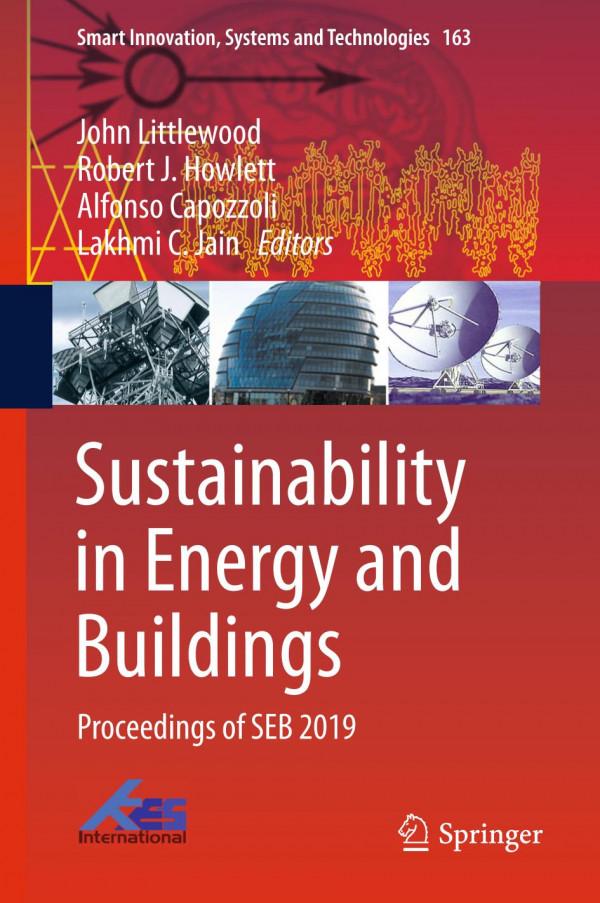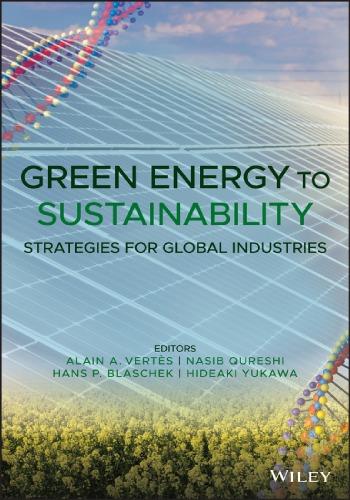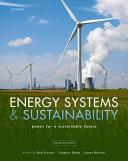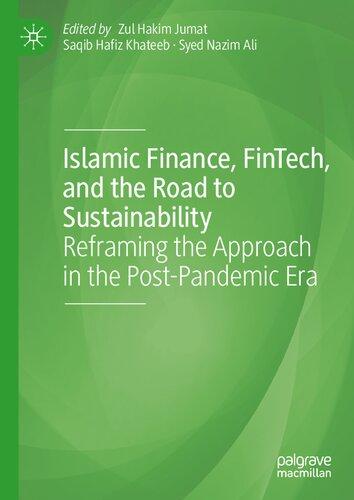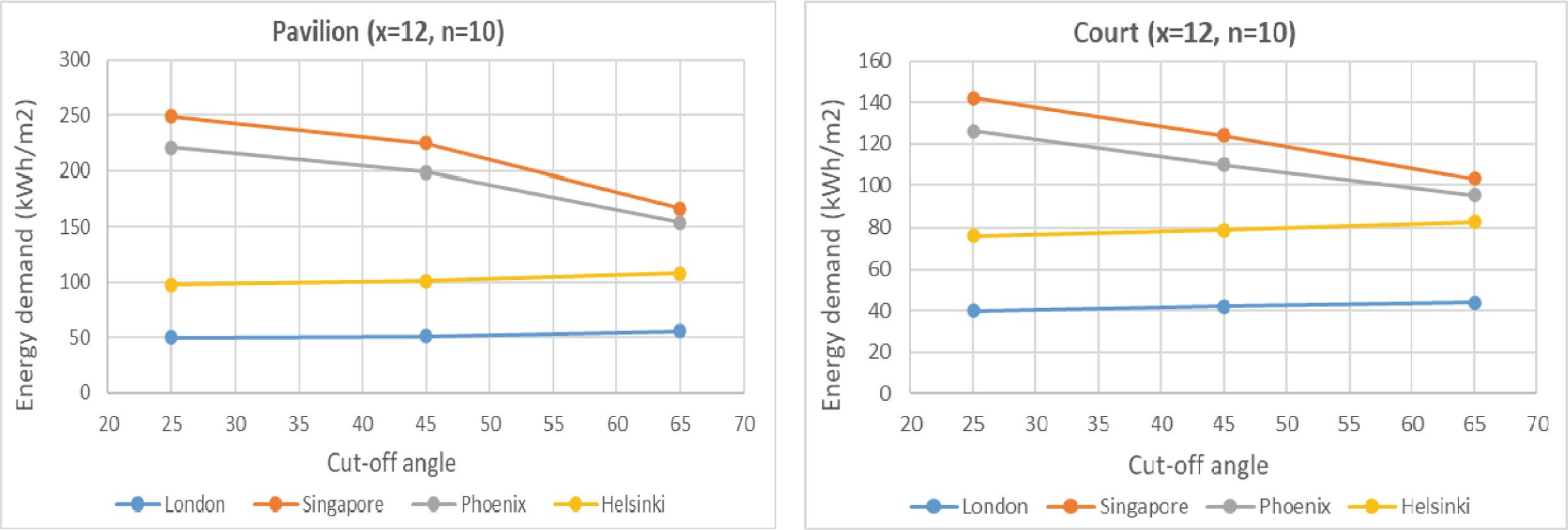Instant digital products (PDF, ePub, MOBI) ready for you
Download now and discover formats that fit your needs...
Sustainability in Energy and Buildings: Proceedings of SEB 2019 1st ed. 2020 Edition John Littlewood
https://ebookmass.com/product/sustainability-in-energy-and-buildingsproceedings-of-seb-2019-1st-ed-2020-edition-john-littlewood/
ebookmass.com
Green Energy to Sustainability Blaschek
https://ebookmass.com/product/green-energy-to-sustainability-blaschek/
ebookmass.com
Energy Systems and Sustainability Third Edition Bob Everett
https://ebookmass.com/product/energy-systems-and-sustainability-thirdedition-bob-everett/
ebookmass.com
Drug Use and Abuse Stephen A. Maisto
https://ebookmass.com/product/drug-use-and-abuse-stephen-a-maisto/
ebookmass.com
Rules to Win By: Power and Participation in Union Negotiations Jane Mcalevey
https://ebookmass.com/product/rules-to-win-by-power-and-participationin-union-negotiations-jane-mcalevey/
ebookmass.com
Engineering Mechanics 4 edition Edition S. Timoshenko
https://ebookmass.com/product/engineering-mechanics-4-edition-editions-timoshenko/
ebookmass.com
Islamic Finance, FinTech, and the Road to Sustainability: Reframing the Approach in the Post-Pandemic Era Zul Hakim Jumat
https://ebookmass.com/product/islamic-finance-fintech-and-the-road-tosustainability-reframing-the-approach-in-the-post-pandemic-era-zulhakim-jumat/
ebookmass.com
The Ultimate Kid's Guide to the Universe Jenny Marder
https://ebookmass.com/product/the-ultimate-kids-guide-to-the-universejenny-marder/
ebookmass.com
Sourcing and Procurement with SAP S/4HANA Ashlock
https://ebookmass.com/product/sourcing-and-procurement-withsap-s-4hana-ashlock/
ebookmass.com
Culture and Psychology, 7e 7th Edition
https://ebookmass.com/product/culture-and-psychology-7e-7th-editiondavid-matsumoto/
ebookmass.com
John Littlewood
Robert J. Howlett
Lakhmi C. Jain Editors
Sustainability in Energy and Buildings 2022
SmartInnovation,SystemsandTechnologies
Volume336
SeriesEditors
RobertJ.Howlett,KESInternationalResearch,Shoreham-by-Sea,UK
LakhmiC.Jain,KESInternational,Shoreham-by-Sea,UK
TheSmartInnovation,SystemsandTechnologiesbookseriesencompassesthetopics ofknowledge,intelligence,innovationandsustainability.Theaimoftheseriesisto makeavailableaplatformforthepublicationofbooksonallaspectsofsingleand multi-disciplinaryresearchonthesethemesinordertomakethelatestresultsavailableinareadily-accessibleform.Volumesoninterdisciplinaryresearchcombining twoormoreoftheseareasisparticularlysought.
Theseriescoverssystemsandparadigmsthatemployknowledgeandintelligence inabroadsense.Itsscopeissystemshavingembeddedknowledgeandintelligence, whichmaybeappliedtothesolutionofworldproblemsinindustry,theenvironment andthecommunity.Italsofocussesontheknowledge-transfermethodologiesand innovationstrategiesemployedtomakethishappeneffectively.Thecombination ofintelligentsystemstoolsandabroadrangeofapplicationsintroducesaneed forasynergyofdisciplinesfromscience,technology,businessandthehumanities. Theserieswillincludeconferenceproceedings,editedcollections,monographs, handbooks,referencebooks,andotherrelevanttypesofbookinareasofscienceand technologywheresmartsystemsandtechnologiescanofferinnovativesolutions.
Highqualitycontentisanessentialfeatureforallbookproposalsacceptedforthe series.Itisexpectedthateditorsofallacceptedvolumeswillensurethatcontributions aresubjectedtoanappropriatelevelofreviewingprocessandadheretoKESquality principles.
IndexedbySCOPUS,EICompendex,INSPEC,WTIFrankfurteG,zbMATH, JapaneseScienceandTechnologyAgency(JST),SCImago,DBLP.
AllbookspublishedintheseriesaresubmittedforconsiderationinWebofScience.
JohnLittlewood · RobertJ.Howlett · LakhmiC.Jain
Editors
SustainabilityinEnergy andBuildings2022
Editors
JohnLittlewood
CardiffSchoolofArtandDesign,The SustainableandResilientBuilt EnvironmentResearchGroup
CardiffMetropolitanUniversity
Cardiff,UK
LakhmiC.Jain KESInternational Selby,UK
LiverpoolHopeUniversity Liverpool,UK
RobertJ.Howlett KESInternationalResearch Shoreham-by-Sea,UK
‘AurelVlaicu’UniversityofArad Arad,Romania
ISSN2190-3018ISSN2190-3026(electronic) SmartInnovation,SystemsandTechnologies ISBN978-981-19-8768-7ISBN978-981-19-8769-4(eBook) https://doi.org/10.1007/978-981-19-8769-4
©TheEditor(s)(ifapplicable)andTheAuthor(s),underexclusivelicensetoSpringerNature SingaporePteLtd.2023
Thisworkissubjecttocopyright.AllrightsaresolelyandexclusivelylicensedbythePublisher,whether thewholeorpartofthematerialisconcerned,specificallytherightsoftranslation,reprinting,reuse ofillustrations,recitation,broadcasting,reproductiononmicrofilmsorinanyotherphysicalway,and transmissionorinformationstorageandretrieval,electronicadaptation,computersoftware,orbysimilar ordissimilarmethodologynowknownorhereafterdeveloped.
Theuseofgeneraldescriptivenames,registerednames,trademarks,servicemarks,etc.inthispublication doesnotimply,evenintheabsenceofaspecificstatement,thatsuchnamesareexemptfromtherelevant protectivelawsandregulationsandthereforefreeforgeneraluse.
Thepublisher,theauthors,andtheeditorsaresafetoassumethattheadviceandinformationinthisbook arebelievedtobetrueandaccurateatthedateofpublication.Neitherthepublishernortheauthorsor theeditorsgiveawarranty,expressedorimplied,withrespecttothematerialcontainedhereinorforany errorsoromissionsthatmayhavebeenmade.Thepublisherremainsneutralwithregardtojurisdictional claimsinpublishedmapsandinstitutionalaffiliations.
ThisSpringerimprintispublishedbytheregisteredcompanySpringerNatureSingaporePteLtd. Theregisteredcompanyaddressis:152BeachRoad,#21-01/04GatewayEast,Singapore189721, Singapore
Organization
InternationalProgrammeCommittee
KouzouAbdellahDjelfaUniversity,Algeria AbdelGhaniAissaouiUniversityofBechar,Algeria MahmoodAlamUniversityofBrighton,UK RicardoAlmeidaPolytechnicInstituteofViseu,Portugal HasimAltanArkinUniversityofCreativeArtsandDesign,Cyprus
MartinAndaMurdochUniversity,Australia
MariaBeatriceAndreucciSapienzaUniversityofRome,Italy
TourajAshrafianOzyeginUniversity,Turkey AhmadTaherAzarPrinceSultanUniversity,SaudiArabia
JipingBaiUniversityofSouthWales,UK
EvaBarreiraUniversityofPorto,Portugal UmbertoBerardiRyersonUniversity,Canada GabrieleBernardiniUniversitàPolitecnicadelleMarche,Italy FrancescoCaliseUniversityofNaplesFedericoII,Italy
RosaCaponettoUniversityofCatania,Italy KateCarterUniversityofEdinburgh,UK StefanoCasconeMediterraneaUniversityofReggioCalabria,Italy ChristopherChaoTheHongKongPolytechnicUniversity AbdellahChehriUniversityofQuebec—UQAC,Canada GiacomoChiesaPolitecnicodiTorino,Italy
DorotaChwiedukWarsawUniversityofTechnology,Poland PaoloCivieroCataloniaInstituteforEnergyResearch,Spain
NicolaColaninnoPolytechnicofMilan,Italy
VincenzoCostanzoUniversityofCatania,Italy AlessandroD’AmicoSapienzaUniversitàdiRoma,Italy
ElisaDiGiuseppeUniversitàPolitecnicadelleMarche,Italy MiriamDiMatteoSapienzaUniversityofRome,Italy
MoustaphaDoumiatiESEOSchoolofEngineering—IREENAUR4642, France
MahieddineEmzianeUniversityofBirmingham,UK
DianaEnescuValahiaUniversityofTargoviste,Romania YoussefErramiChouaibDoukkaliUniversity,Morocco NajibEssounbouliUniversitédeReimsChampagne-Ardenne,France
FatimaFarinhaUniversidadedoAlgarve,Portugal TiagoMiguelFerreiraUniversityoftheWestofEngland—UWEBristol,UK AntonioGaglianoUniversityofCatania,Italy
GeorgeGeorghiouUniversityofCyprus
GiadaGiuffridaUniversityofCatania,Italy
ChengSiewGohHeriot-WattUniversity,UK GwanggilJeonIncheonNationalUniversity,Korea
HongJinHarbinInstituteofTechnology,China
MohammadArifKamalAligarhMuslimUniversity,India
PrasadKaparajuGriffithUniversity,Australia GeorgeKaraniCardiffMetropolitanUniversity,UK KhalilKassmiMohamedPremierUniversity,Morocco MohanLalKolheUniversityofAgder,Norway AnguiLiXi’anUniversityofArchitectureandTechnology,China JohnLittlewoodCardiffMetropolitanUniversity,UK
AlessandroLoFaroUniversityofCatania,Italy
JuditLopezUPCBarcelonaTech,Spain
GiuseppeManganoMediterraneaUniversityofReggioCalabria,Italy
SimonaMannucciSapienzaUniversityofRome,Italy
GianlucaMaracchiniUniversitàPolitecnicadelleMarche,Italy
AhmedMezrhabMohamedPremierUniversity,Morocco
MicheleMorgantiSapienzaUniversityofRome,Italy
BenedettoNastasiSapienzaUniversityofRome,Italy
ConsueloNavaMediterraneaUniversityofReggioCalabria,Italy
FrancescoNoceraUniversityofCatania,Italy
MasaNoguchiUniversityofMelbourne,Australia
SonjaOliveiraUniversityofStrathclyde,UK
EmekaEfeOsajiLeedsBeckettUniversity,UK PaulOsmondUniversityofNewSouthWales,Australia
AnnaPellegrinoPolitecnicodiTorino,Italy
AbdelhamidRabhiUniversitéofPicardieJulesVerne,Amiens,France
FernandaRodriguesUniversityofAveiro,Portugal
FedericaRossoSapienzaUniversityofRome,Italy
RachidSaadaneHassaniaSchoolofPublicWorks,Morocco AtulSagadeEnergyCenter,FCFM,UniversityofChile,Santiago, Chile
FrancescaScalisiDEMETRAEuro-MediterraneanDocumentationand ResearchCenter,Italy
LloydScottTechnologicalUniversityDublin,Ireland
SaschaStegenGriffithUniversity,Australia AhmedTahourUniversityofMascara,Algeria AliTahriUniversityofScienceandTechnologyofOran,Algeria
Horia-NicolaiTeodorescuInstituteofComputerScienceofRomanianAcademy, Romania
LindaToledoStrathclydeUniversity,UK
SimonTuckerLiverpoolJohnMooresUniversity,UK
AndreaVallatiSapienzaUniversityofRome,Italy
WilfriedvanSarkUtrechtUniversity,Netherlands RomeuVicenteUniversityofAveiro,Portugal
CostanzaVittoriaSapienzaUniversityofRome,Italy
SimonWaltersUniversityofBrighton,UK
XingxingZhangDalarnaUniversity,Sweden
JingZhaoUniversityofLincoln,UK
GeorgeZhenChenUniversityofStrathclyde,UK
SmailZouggarMohammedPremierUniversity,Morocco
Preface
The14thInternationalConferenceonSustainabilityandEnergyinBuildings2021 (SEB22)isasignificantinternationalconferenceorganisedbyapartnershipmadeup ofKESInternationalandTheSustainableandResilientBuiltEnvironmentresearch group,CardiffMetropolitanUniversity.
SEB-22invitedcontributionsonarangeoftopicsrelatedtosustainableand resilientbuildingsandrenewableenergyandexploredinnovativethemesregarding buildingadaptationrespondingtoclimatechangemitigationandotherlocal,national andglobalchallenges.
TheaimoftheconferencewastobringtogetherUniversityresearchers,GovernmentandScientificexpertsandIndustryprofessionalstodiscusstheminimisation ofenergyuseandassociatedcarbonemissionsinbuildings,neighbourhoods,cities intheurbancontextbutalsorurally;fromatheoretical,practical,implementation, modellingandsimulationperspective.Theconferenceformedanexcitingchanceto present,interact,andlearnaboutthelatestresearchandpracticaldevelopmentson thesubjectwithrealworldimpact.SEB22willbeheldinahybridformwithphysicalandvirtualattendance,inresponsetoagileworkpatternsfollowingtheglobal COVID-19pandemic.
TheconferencefeaturedtwoGeneralTrackschairedbyexpertsinthefields:
• SustainableandResilientBuildings
• SustainableEnergyTechnologies.
Inaddition,therewereeightInvitedSessionsproposedandorganisedby prominentresearchers.
Itisimportantthataconferenceprovideshighqualitytalksfromleading-edge presenters.SEB-22featuredthekeynotespeakerProf.PeteWalker,CentreforInnovativeConstructionMaterials,DepartmentofArchitectureandCivilEngineeringat theUniversityofBathUK.
Theconferenceattractedsubmissionsfromaroundtheworld.Submissionsfor theFull-PaperTrackweresubjectedtoatwo-stageblindpeer-reviewprocess.With theobjectiveofproducingahigh-qualityconference,onlythebestofthesewere selectedforpresentationattheconferenceandpublicationintheSpringerasbook
x Preface chapters.SubmissionsfortheShortPaperTrackweresubjectedtoa‘lighter-touch’ reviewandpublishedinanonlinemedium,butnotintheSpringerbook.
Thanksareduetotheverymanypeoplewhohavegiventheirtimeandgoodwill freelytomakeSEB-22asuccess.WewouldliketothankthemembersoftheInternationalProgrammeCommitteewhowereessentialinprovidingtheirreviewsofthe conferencepapers,ensuringappropriatequality.Wethankthehigh-profilekeynote speakersforprovidinginterestingtalkstoinformdelegatesandprovokediscussion. Importantcontributorstotheconferenceweremadebytheauthors,presenters,and delegateswithoutwhomtheconferencecouldnothavetakenplace,soweoffer themourthanks.Finally,wewouldliketothanktheadministrativestaffofKES International.
Itishopedthatyoufindtheconferenceaninteresting,informative,anduseful experience;andremainconnectedthroughtheKESInternationalVirtualConference Experience.
Cardiff,Wales,UK Shoreham-by-Sea,UK Selby,UK
JohnLittlewood RobertJ.Howlett LakhmiC.Jain SEB-22ConferenceChairs
Contents
ImpactofClimateonBuildingEnergyPerformance,UrbanBuilt FormandUrbanGeometry ........................................1
EhsanAhmadian,AmiraElnolaky,BehzadSodagar,andIvanVerhaert
ADecisionSupportToolfortheCo-designofEnergyandSeismic RetrofittingSolutionsWithinthee-SAFEProject .....................12 G.Evola,G.Margani,V.Costanzo,A.Artino,D.L.Distefano, G.Semprini,M.Lazzaro,andD.Arnone
ComparisonoftheMorphologicalInfluenceofCanopyRoughness SpaceinShenzhenandHarbinMainUrbanAreas ....................22 MingLu,DiSong,JunXing,JingLiu,andLuWang
TheImpactofaVerticalGreeningSystemontheIndoor ThermalComfortinLightweightBuildingsandontheOutdoor EnvironmentinaMediterraneanClimateContext ....................37 GraziaLombardo,AngelaMoschella,FrancescoNocera, AngeloSalemi,GaetanoSciuto,AlessandroLoFaro, MaurizioDetommaso,andVincenzoCostanzo
RecyclingVolcanicAshandGlassPowderintheProduction ofAlkaliActivatedMaterials .......................................47
LoredanaContrafatto,DanieleCalderoni,SalvatoreGazzo, andEnricoBernardo
ThermalEnvironmentRetrofittingofOutdoorActivitySpaces inOldSettlementsinSevereColdRegionsofChina ...................56 YujingLiuandJinHong
ANovelLaboratoryProceduretoDetermineThermal ConductivityofGreenRoofSubstrates ..............................66 StefanoCasconeandAntonioGagliano
StudyonResidents’PerceptionofLow-CarbonPolicyandIts InfluenceonLow-CarbonBehaviorIntention ........................76 AlinLin,JiankunLou,andRanYue
TheTechno-EconomicEffectofPV-BSSSizeUnderVarious SupportingSchemes:AReplicableMethodforBuildings ..............86
NikolasG.ChatzigeorgiouandGeorgeE.Georghiou
EnvironmentalAssessment,CostAssessmentandUserExperience ofElectricExcavatorOperationsonConstructionSitesinNorway .....97 MarianneKjendsethWiik,KristinFjellheim,KamalAzrague, andJonAreSuul
ARapidSurveyFormforUsers’ExposureandVulnerability AssessmentinRisk-ProneBuiltEnvironments .......................109 EnricoQuagliarini,GuidoRomano,GabrieleBernardini, andMarcoD’Orazio
AssessingPeople’sEfficiencyinWorkplacesbyCoupling ImmersiveEnvironmentsandVirtualSounds ........................120
AriannaLatini,SamanthaDiLoreto,ElisaDiGiuseppe, MarcoD’Orazio,CostanzoDiPerna,ValterLori,andFabioSerpilli AssessmentAnalysisofBEV/PHEVRechargeinaResidential Micro-GridBasedonRenewableGeneration .........................130 DarioPelosi,LindaBarelli,MichelaLongo,andDarioZaninelli ImpactofUsingPhaseChangeMaterialswithDifferentWall OrientationsinaClassroomBuildingUnderaWarmTemperate Climate ...........................................................140
MohammedAminNassimHaddad,HamzaSemmari,KhaledImessad, MohammedCherifLekhal,LotfiDerradji,D.Rouag-Saffidine, andMohamedAmara
ApplicationsofThermoelectricityinBuildings:FromEnergy HarvestingtoEnergyManagement ..................................152 DianaEnescu
NaturalandRecycledStabilizersforRammedEarthMaterial Optimization ......................................................164 GiadaGiuffrida,VincenzoCostanzo,FrancescoNocera, MassimoCuomo,andRosaCaponetto
DrivingaPhotovoltaicPanelinManhattanwithWell-Chosen ProjectionsoftheReflectionsoftheMirrorCity ......................175 BenoitBeckers,JairoAcuñaPazyMiño,andInèsdeBort
OneStopShopsonHousingEnergyRetrofit.EuropeanCases, andItsRecentImplementationinSpain .............................185 RolandoBiere-ArenasandCarlosMarmolejo-Duarte
MitigatingMulti-risksintheHistoricalBuiltEnvironment: AMulti-strategyAdaptiveApproach ................................197
FedericaRosso,LetiziaBernabei,GabrieleBernardini, JuanDiegoBlancoCadena,MartinaRusso,AlessandroD’Amico, GrazianoSalvalai,EdoardoCurrà,EnricoQuagliarini, andGiovanniMochi
SensorialDesign—ACollaborativeApproachforArchitects andEngineers .....................................................208
P.Grant,J.R.Littlewood,R.Pepperell,andF.Sanna
HemplimeBlocks:InnovativeSolutionforGreenBuildingsinItaly ....218 ChiaraMoletti,PatriziaAversa,BrunoDaniotti,GiovanniDotelli, VincenzaA.M.Luprano,AnnaMarzo,SergioSabbadini, andConcettaTripepi
HavePopulationGrowthandEconomicActivityConverged TowardstheSamePatternintheSpanishMetropolises? ..............228 CésarCostaCosta,CarlosMarmolejoDuarte,andRolandoBiereArenas
ACommunityHousingAssociation’sStrategy fortheBenchmarking,ReductionandSequestration ofCarbonTowardsaResilientandGloballyResponsibleWales (UK) .............................................................240
K.Stevens-Wood,J.R.Littlewood,andF.Sanna
ManagementofIndoorThermalConditionsinHeavy andLightweightBuildings:AnExperimentalComparison ............249 NicolaCallegaro,LucaEndrizzi,LucaZaniboni,andRossanoAlbatici
ComparisonoftheThermalEffectofTwoAutomaticControls ofRollerShuttersinanAcademicSpace .............................261 MarcRoca-Musach,ElenaGarcia-Nevado,CarlosAlonso-Montolio, IsabelCrespoCabillo,andHelenaCochRoura EnergyPovertyandHeatwaves.ExperimentalInvestigation onLow-IncomeHouseholds’EnergyBehavior .......................271 GianlucaMaracchini,ElisaDiGiuseppe,andMarcoD’Orazio SensitivityandUncertaintyAnalysisonUrbanHeatIsland IntensityUsingtheLocalClimateZone(LCZ)Schema:TheCase StudyofAthens ...................................................281 GianlucaMaracchini,FatemehSalehipourBavarsad, ElisaDiGiuseppe,andMarcoD’Orazio ChallengesinBiPV/PCMFaçadeSystem:PathwaysTowards NumericalModellingandSimulationApproaches ....................291 Jakub ˇ Curpek,Miroslav ˇ Cekon,OndˇrejŠikula, andMuhammadFaisalJunaid
IntegratingVegetationandCities:AReviewoftheApplicative SolutionsfromTechnicalComponenttoPlanningScale ...............301 AriannaPeduzziandCarloCecere
RECsim—VirtualTestbedforControlStrategiesImplementation inRenewableEnergyCommunities .................................313
AntonioGallo,MarcoSavinoPiscitelli,LorenzoFenili, andAlfonsoCapozzoli
EnergyRetrofitandFireProtectioninExistingHigh-Rise ResidentialBuildings:ACaseStudyinModena(Italy) ................324 LucaGuardigliandFaustoBarbolini
APilotStudytoEvaluateOccupantQualityofLifeinOptimised RetrofitDwellingsinWales,UK .....................................337
J.R.Littlewood,X.Zhang,andG.Karani
BIM-BasedWorkflowforManagingMulti-riskFactorsofOpen SpacesinHistoricalBuiltEnvironment ..............................347
M.Angelosanti,M.Russo,A.D’Amico,M.Pugnaletto,C.Paolini, E.Quagliarini,andE.Currà
ExperimentalAssessmentofaPreliminaryRule-Based Data-DrivenMethodforFaultDetectionandDiagnosisofCoils, FansandSensorsinAir-HandlingUnits .............................359
MohammadElYoussef,FrancescoGuarino,SergioSibilio, andAntonioRosato
BridgingtheFlexibilityConceptsintheBuildingsandMulti-energy Domains ..........................................................371 GianfrancoChicco,DianaEnescu,andAndreaMazza
OffsiteManufacturingofTimber-FrameWoodfibreInsulated ConstructionSystemsforNearly-to-ZeroCarbonDwellings inWales,UK ......................................................386
J.R.Littlewood,R.J.M.Hawkins,N.I.Evans,andC.Hale
EnergyCommunities:TheConceptofWastetoEnergy-CHP BasedDistrictHeatingSystemforanItalianResidentialDistrict .......397 L.Pompei,F.Nardecchia,V.Lanza,L.M.Pastore,andL.deSantoli
RenewableEnergySystemAppliedtoSocialHousingBuilding inMediterraneanClimate ..........................................407 AndreaVallati,StefanoGrignaffini,CostanzaVittoriaFiorini, SimonaMannucci,andMiriamDiMatteo
CyclicLateralLoadTestofaWallwithTimberFrameStructure andLightearthEnvelope ...........................................418
G.Becerra,S.Onnis,G.Meli,M.Wieser,andJ.Vargas-Neumann
Takagi-SugenoFuzzyControlofanInterleavedDC-DCBoost Converter
M.Nachidi,K.Khennoune,I.Ouachani,andA.Rabhi
AuthorIndex
AbouttheEditors
JohnLittlewood isaProfessorofSustainableandResilientBuildings,andholdsa Ph.D.inBuildingPerformanceAssessment.HeistheheadoftheSustainableand ResilientBuiltEnvironmentresearchgroupinCardiffSchoolofArtandDesignat CardiffMetropolitanUniversity(UK).HehasbeenGeneralChairfortheSustainabilityinEnergyandBuildingsinternationalconferencein2014,2017andfrom 2019todate.HecoordinatesthreeprofessionaldoctoratesinArtandDesignPractice,Engineering,andSustainableBuiltEnvironment.HeisaCharteredBuilding Engineerandhisinnovation,andresearchexpertiseisindustryfocused,identifying andimprovingfireandthermalperformanceinexistingandnewdwellingstoenable occupantqualityoflife.Inaddition,tohelpingorganisationsuseinnovativematerials inoffsitemanufacturingandinconstructiontodeliverasustainableandresilientbuilt environment.Hehasauthored,co-authoredandco-editedover160peer-reviewed articlesandbookvolumesforSpringer.
RobertJ.Howlett istheAcademicChairofKESInternationalanon-profitorganisationwhichfacilitatesknowledgetransferandthedisseminationofresearchresults inareasincludingIntelligentSystems,Sustainability,andKnowledgeTransfer.He isVisitingProfessorat‘AurelVlaicu’UniversityofArad,Romania,andhasalso beenVisitingProfessoratBournemouthUniversity,UK.Histechnicalexpertiseis intheuseofartificialintelligenceandmachinelearningforthesolutionofindustrial problems.Hiscurrentinterestscentreontheapplicationofintelligentsystemsto sustainability,particularlyrenewableenergy,smart/microgridsandapplicationsin housingandglasshousehorticulture.Hepreviouslydevelopedanationalprofilein knowledgeandtechnologytransfer,andthecommercialisationofresearch.Heworks withanumberofuniversitiesandinternationalresearchgroupsonthesupervision teamsofPh.D.students,andtheprovisionoftechnicalsupportforprojects.
ProfessorLakhmiC.Jain Ph.D.,Dr.H.C.,M.E.,B.E.(Hons),Fellow(Engineers Australia),iswiththeLiverpoolHopeUniversityandtheUniversityofArad.Hewas formerlywiththeUniversityofTechnologySydney,theUniversityofCanberraand BournemouthUniversity.
ProfessorJainservestheKESInternationalforprovidingaprofessionalcommunitytheopportunitiesforpublications,knowledgeexchange,cooperationand teaming.Involvingaround5000researchersdrawnfromuniversitiesandcompaniesworld-wide,KESfacilitatesinternationalcooperationandgeneratesynergyin teachingandresearch.KESregularlyprovidesnetworkingopportunitiesforprofessionalcommunitythroughoneofthelargestconferencesofitskindintheareaof KES.
ImpactofClimateonBuildingEnergy Performance,UrbanBuiltFormandUrban Geometry
EhsanAhmadian1(B) ,AmiraElnolaky2 ,BehzadSodagar2 ,andIvanVerhaert1
1 UniversityofAntwerp,Groenenborgerlaan171,2020Antwerp,Belgium ehsan.ahmadian@uantwerpen.be
2 UniversityofLincoln,BrayfordWay,LincolnLN67TS,UK
Abstract. Thestudyinvestigatestheimpactofclimateontheresidentialbuilding energyperformanceanditsrelationshipwithurbanbuiltformandgeometryof thebuiltenvironment.Itaimstoidentifythemostenergeticallysustainableurban builtformandoptimalurbangeometryindifferentclimatesthatresultsinhigher energyperformanceofbuildings.Geometricalmodelsoffoururbanbuiltforms aredeveloped,andasimulationmethodisusedtoconductsensitivityanalysesover thefourcasestudies(citiesofLondon,Singapore,HelsinkiandPhoenix)thatare selectedbasedonspecificclimaticcriteria.TheEnergyEquity(EE)indicatoris usedfordemonstrationoftheresults,whichsimultaneouslyconsiderstheamount ofbuildingenergydemandaswellasenergygenerationbybuilding-mounted PVs.Theresultsshowthatincreasingthecut-offangle(i.e.,reducingbuildings distance)reducesbuildingenergydemandincooling-dominatedbuildings(i.e., inSingaporeandPhoenix)between6%and56%whileincreasesbuildingenergy demandinheating-dominatedbuildings(i.e.,inLondonandHelsinki)between2% and16.5%.Hence,theimpactofdistancebetweenbuildingsonbuildingenergy demandismoresignificantinhotclimates.Ingeneral,buildingenergydemandin Londonisthelowestamongthecasestudies,whileitisthehighestinSingapore (upto219%higherthanLondon).LondonalsoshowsthehighestvalueofEE (demonstratingthebestenergyperformance)andHelsinkishowsthelowest(up to51%lowerthanLondon).Itisrecommendedtousethetunnel-courtbuiltform tohaveamoreenergy-efficientbuildings,specificallyinhotclimates.
Keywords: Buildingenergyperformance Urbanbuiltform Climate
1Introduction:TheImportanceofDesignwithClimate
Ithasbeenwell-establishedbydifferentstudiesthatbuildingenergyperformancecorrelateswithurbanbuiltformanddensity[1–3],whileurbandensityisdirectlyrelatedto thegeometryofthebuiltenvironment[4].Thecorrelationitselfisinfluencedbyclimate anddependentonthegeographicallocationofacity.Forinstance,boththemagnitude andtypeofbuildingenergydemandandthepotentialofrenewableenergygeneration, specificallysolarenergy,dependonclimateandlocation.Theyconsequentlyinfluence
©TheAuthor(s),underexclusivelicensetoSpringerNatureSingaporePteLtd.2023 J.LittlewoodandR.J.Howlett(Eds.):SEB2022,SIST336,pp.1–11,2023. https://doi.org/10.1007/978-981-19-8769-4 1
2E.Ahmadianetal.
therelationshipofenergywithurbanformandgeometry[5].Thismakesitvitaltodesign buildingsaccordingtoclimaticconditionsduringtheearlystagesofthedesignprocess [6].Climaticvariablesmustbeknowntopredictthethermalbehaviorofthebuilding envelope[7].
Incontemporarybuildingdesignsandwiththeuseofmechanicalequipment(e.g.,air conditioningsystem)toprovidesatisfyingthermalconditions,lessattentionhasbeen paidtoclimaticconditions.Builtformshavebecomeverysimilarineverycornerof theworldregardlessofclimate,reflectingthelossoftraditionalskillswithrespectto aclimate-sensitivedesign.Morerecently,withmorefocusonsustainability,wehave beguntoconsiderclimateconditionsforachievingsustainablebuilding/urbandesigns. Forinstance,DursunandYavas[8]emphasizedthattohaveasustainableurbandevelopment,aclimate-sensitiveurbandesignguidelineisurgentlyneededandtheurbanbuilt environmentshouldbeconsistentwithclimaticconditions.Muhaisen[9]suggestedgeneralrulesandguidelinesforthedesignofcourtyardsinfourdifferentclimaticregions. KocagilandOral[10]showedthatbuildingformandsettlementtextureareinfluential parametersforheating/coolingloadsofbuildingsinahot-dryclimatezonetoprovide optimumconditions.KhaliliandAmindeldar[11]identifiedthattraditionalcourtyards haveemergedinthehot-aridregionsofIrantoreducethedetrimentalaspectsofthe climateprovidingbettermicroclimaticconditionsforoccupants.Strømann-Andersen andSattrup[12]arguedthatinnorthernEuropeancitieswithhighlatitudesandlow solarinclinations,urbandensityisofparticularconcernsinceurbangeometryaffects solaraccessmorethaninotherurbancentersaroundtheworld.
Therefore,climatenotonlyinfluencesbuildingenergydemandbutalsodetermines suitablebuiltformsanddensityofurbanareas.Althoughpreviousstudieshaveinvestigatedtheimpactofclimateonbuildingenergydemand,fewhaveconsideredtheimpact ofclimateontheenergyperformanceofbuildingswithdifferentbuiltformsandurban geometricvariables.Theaimofthisstudyisidentificationofthemostenergeticallysustainableurbanbuiltformandoptimalurbangeometryindifferentclimatesthatresultsin higherenergyperformanceofbuildings.Buildingenergyperformanceincludesenergy demandalongwithsolarenergygenerationfromroof-mountedPVpanelsthatisnecessarytobeconsideredtoachievesustainablecitiesoffuture.Fourcasestudiesfrom differentclimatezonesareselectedandforeachcase,thecorrelationofbuildingenergy performancewithurbangeometricvariablesandtheselectedbuiltformsisinvestigated. Simulationmethodisadoptedforenergysimulationofthebuiltformmodels,andconsequently,acomparativeanalysissuggeststhemostenergy-efficienturbanbuiltforms inthedifferentclimates.
2Methodology
Thestudyinitiallydevelopsgeometricmodelsofthefourselectedbuiltformsusingthree influentialgeometricparameters.Secondly,casestudiesfromdifferentclimatezonesare selected.Finally,simulationtrialsareperformedtoobtainbuildingenergydemandand solarenergygenerationfromroof-mountedPVs.Theresultsfromdifferentcasestudies arecomparedtoidentifytheimpactofclimateonbuildingenergyperformance,urban builtformandurbangeometry.
2.1DevelopingGeometricalModelsofDifferentBuiltForms
Geometricalmodelsoffoururbanbuiltform,namely,pavilion,terrace,courtandtunnelcourtformaredeveloped(seeFig. 1)usingthreegeometricalparameters,namely,the cut-offangle(θ),theplandepth(x)andthenumberoffloors(n)[4].Thesethreevariables explainthewholegeometryofabuiltenvironmentandhaveasignificanteffecton buildingenergyperformance[13].AsshowninFig. 1 (right),thecut-offanglerepresents thedistancebetweenbuildings(L)inthesiteplan.
Fig.1. Genericurbanbuiltforms a pavilion, b terrace, c court,and d tunnel-court(left),section showingcut-offangle(right).
2.2CaseStudySelectionandEnergySimulation
CasestudiesfromdifferentclimaticconditionsareselectedusingtheKöppenclimate classificationsystem(alsoknownastheKöppen–Geiger)[14].Itdividestheearthinto fivemainzones,GroupA:tropical(megathermal)climates,GroupB:dry(aridand semiarid)climates,GroupC:temperate(mesothermal)climates,GroupD:continental/cold(microthermal)climates,GroupE:polarandalpine(montane)climates.Four largemetropolitancitiesareselectedasthecasestudiesbasedontheirdiverseclimatic conditionstorepresenteachofthemainclimatezones.Theirgreatpopulationsshow theirsignificantcontributiontooverallurbanenergyconsumption.Hence,providing guidelinesfortheoptimizationofenergywithrespecttotheirbuiltformandgeometryis beneficialforfuturedevelopmentsofthesecitiesthatcanconservesignificantamounts ofenergyandpreventhighlevelsofcarbonemissions.
GroupA:Singapore(tropicalhotandhumidclimate):ThemetropolitanCityof Singapore,locatedatthelatitudeof1.3521°Nandlongitudeof103.8198°W,isan equatorialcitywithahot,humidandrainyclimate.Energyconsumptionofbuildings contributesaboutathirdofSingapore’stotalelectricityproduction[15].Althoughusing passivedesignstrategiesareencouragedin80%oftheresidentialbuiltarea,theenergy performanceofabuildingismeasuredaccordingtoactivemechanicalsystems[16].
GroupB:Phoenix(hotandaridclimate):ThemetropolitanCityofPhoenixasthe capitalofthestateofArizonaintheUSA,locatedatthelatitudeof33.4484°Nand longitudeof112.0740°W.Phoenixhasalong,hotsummerandshort,mildwinter.Itis
oneofthesunniestcitiesintheworld(inadesertlocation)withapproximately300days ofsunshineperyear.Itmakesthiscityasuitablecandidateforthisstudysincethe potentialofPVenergyharvestingisbeingconsidered.
GroupC:London(temperateclimate):ThemetropolitanCityofLondonasthe capitalofEngland,locatedatthelatitudeof51.5074°Nandlongitudeof0.1279°W.It hasatemperateclimatewithwarmsummerandwithoutdryseason.
GroupD:Helsinki(continentalcoldclimate):ThemetropolitanCityofHelsinki asthecapitalcityofFinland,locatedatthelatitudeof60.1699°Nandlongitudeof 24.9384°W.Ithasacontinentalcoldclimatewithwarmsummerandwithoutadry season.Itsintensewintersimposeasignificantheatingloadonbuildings.
ThisstudydoesnotfindanynecessitytoanalyseacityfromgroupEbecausethere arenolargemetropolitanurbanareasinthesepartsoftheWorld;andtheoutcomewould beidenticaltothecontinentalcoldclimatewithsimilar(butsharper)trends.
Thesimulationmethodisadoptedfortheenergyanalysisofthecasestudies.An urbanenergysimulationsoftware,CitySim,isusedtoperformanenergyanalysison thegeometricalmodelsofthechosenbuiltforms.CitySimconsidersparameterssuch astheshadowingeffectofadjacentbuildings,radiativeinter-reflectionbetweenexternal surfaces,andtheUrbanHeatIsland(UHI)effect[17],whichareimportantfeaturesfor investigatingtheimpactofthegeometryofthebuiltenvironmentonbuildingenergy performance.UHIeffectisconsideredbycalculatingthesurfacetemperatureofallthe surfacesexistinginthesiteplansonanhourlybasis.Theclimatefilesofeachofthecase studiesarederivedfromtheMeteonormdatabase,whichcontains10yearsofaverage dataforeachlocationplustheirhorizonfiles[18].Theoreticalsiteplansofbuildingsare developedforeachbuiltformtobefedintoCitySimforenergyanalysis,whichincludes heating/cooling,lightingandappliancesenergydemands.Eachsiteplaniscomposed ofa5*5gridofsimilarbuildingswhileonlythe energyperformanceofthecentral blockistakenintoaccounttonotonlylimittheedgeeffect,butalso,provideamore realisticmicroclimaticconditionofabuiltenvironmentcomposedofaspecificform ofbuildings.Simulationtrialsarerepeatedbychangingthegeometricalvariablesto identifytheimpactofeachvariableonthebuildingenergyperformance.Subsequently, thewholeprocessisrepeatedseparatelyforeachcasestudyusingitsrelevantclimate data.Toensurealike-for-likecomparisonbetweenbuiltareaswithdifferentgeometries, theparameterssuchasbuildingmaterials,insulation,infiltrationrate(0.5ACH),glazing ratio(40%),occupantdensity(35m2 /person)androomsetpointtemperature(20°C forheatingand24°Cforcooling)arekeptconstant.Allbuildingsareassumedtobe highlyinsulatedwithwallandroofU-valuesof0.18and0.13W/m2 K,respectively. Inpractice,thephysicalcharacteristicsofabuildingenvelopemightbeinfluencedby climaticconditions.Forinstance,thevalueofglazingratioinHelsinkiandSingapore shouldbedifferentsincesolargainshaveanoppositeimpactontheirbuildingenergy demand.However,inthisstudy,tobeconsistentinallcasestudiesandtofocusthestudy ontheimpactofclimate,theseparametersarekeptconstantforallclimaticzones. Inadditiontoclimateandhorizonfiles,theotherinputdataforthesimulationthat isvariablefordifferentcasestudiesistheheating/coolingperiodconsideredforenergy simulations.Thisfactoristhedirectoffspringoftheclimatethatisvariedfordifferent climates.InSingapore,theaveragetemperatureduringthedayandthenightisalmost
constantthroughouttheyear.Therefore,buildingsrequireonlycoolingrelatedenergy allyearround,whichisdefinedastheannualelectricalenergyconsumptionoftheairconditioningsystem[15].Coolingenergyisconsideredtobesuppliedbyaheatpump inthesimulationsforthisstudy.Therefore,itincreasesthetotalelectricityconsumption ofbuildings.LookingathistoricalclimatedataforPhoenix[19]andfollowinginformationprovidedbyauthorsofpreviousstudiesonthiscity[20, 21],thetypicalbuilding coolingperiodisconsideredtobefromApriltoOctoberandtheheatingperiodfrom NovembertoMarch.PhoenixandSingaporebothhaveahotclimate,however,they possessconsiderablydifferentclimaticconditionsthatcreatedifferentbuildingenergy requirements.Singaporerequires12monthsofcoolingwhilePhoenixrequiresseven monthsofcoolingandfivemonthsofheating.DuetothedesertlocationofPhoenix, thereisnormallyasubstantialchangeintemperaturebetweendaytimeandnighttime, therefore,thethermalbehaviorofthehot-dryclimateisverydistinctiveduetowide dailyandseasonalfluctuations[10].InLondon,theheatingseasonbeginsinOctober andlastsuntiltheendofMayaccordingtoSAP[22].Duetothetemperateclimateof theUKanditsmildsummers,normallynocoolingloadisconsideredforresidential buildings[23–25].Helsinkihasacoldclimatewithalongheatingseason.TobeconsistentwithLondoncasestudy,onlytheheatingperiodisconsideredforsimulationtrials ofHelsinki,whichissimilarlytheperiodbetweenOctoberandMay.Forthepurposeof thisstudy,gasisusedforpreparationofheatforhomes.
Foreachcasestudy,216simulationtrialsareconductedfordifferentbuildingplans. Thesesiteplansareobtainedbycombiningthechangesinthegeometricvariablesthat meansalteringthenumberoffloors(from1to30),cut-offangle(25°,45°and65°),and plandepths(from6to60mwith6mintervals).Theselectionof6mintervalisbasedon thepassivetonon-passivearearatiodeterminedintheLTmethod[26].Theresulting valuesofbuildingenergydemandaregiveninkWh/m2 /yearforeachplan.Meanwhile, itisassumedthat90%ofallbuildingroofsarecoveredbyPVstoobtainthesolarenergy potentialofbuildingsindifferentclimates.Adimensionlessenergyindicatortermed EnergyEquity[13]isused,whichisdefinedastheratiooftheyearlyenergygeneration bybuilding-mountedPVsoverbuildingenergydemand.Itisanindicationofbuilding energyself-sufficiency.Pleasenotethatifseasonalself-sufficiencyisaccounted(instead ofyearlyone),theoutcomesmightbedifferent.
3ResultsandDiscussion
Inthissection,initiallytheimpactofcut-offangleonbuildingenergydemandisinvestigated,andsubsequently,thecomparativeanalysisofbuildingenergyperformancein differentclimatesisillustrated.
3.1ImpactofCut-OffAngleinDifferentClimates
Toinvestigatetheimpactofcut-offangleonbuildingenergydemandineachcasestudy, buildingplanscomposedofsimilarbuildingsbutdifferentcut-offanglesaresimulated. Theresultsfordifferentclimatesarecollected,andexemplarcasesareshowninFig. 2, whichrepresentsthegeneraltrendsofallcases.
Fig.2. Impactofcut-offangleonbuildingenergydemandindifferentclimates(exemplarcases).
ItcanbeseenfromFig. 2 that,inbothLondonandHelsinki,greatercut-offangle resultsinhigherbuildingenergydemand.Itmeansthat,forallthebuiltforms,energy demandofbuildingsisthehighestforbuiltenvironmentwithacut-offangleof65°,while havingcut-offangleof25°leadstothelowestbuildingenergydemand.Forinstance,for pavilionbuildingswithplandepthsof12mand10numberoffloorsinLondon,energy demandisequalto50,51and56(kWh/m2 )forthe θ = 25°, θ = 45°and θ = 65°cases, respectively.InHelsinki,varyingthecut-offanglefrom25°to65°canincreasebuilding energydemandbetweenapproximately2%and12%,dependingontheplandepth.The mainreasonforthisoutcomeistheshadowingeffectoftheneighborbuildings.Higher cut-offanglesmeanbuildingareclosertoeachother,whichblocksalargerportionof sunlight.Thisnotonlyreducesthesolargainofbuildingsthroughglazing,butalso decreasestheamountofenergystoredinbuildingthermalmass.Asaresult,buildings needmoreenergytosatisfytheirheatingenergydemand[27].Itmeansthatahigher urbandensityisnotadvantageousforcontinental/cold/temperateclimates.Considering urbanenergyplanningtargetsforthesecities,thismayencourageurbanplannerstoplan newurbanbuiltareastohavelowercut-offanglesbyincreasingthedistancesbetween buildings.
TheresultsshowanoppositetrendforthecitiesofSingaporeandPhoenix.InSingapore,changingthecut-offanglefrom25°to65°candiminishbuildingenergydemand fromapproximately8–56%dependingontheplandepth.Therefore,higherdensity reducesbuildingenergydemandinhotclimatesthatbuildingsarecooling-dominated. Thereasonisthatbyincreasingthecut-offanglethebuildingsbecomecloserandthereforetheshadowingeffectofadjacentbuildingsprotectsthemfromintensesolarradiation (whichreducessolarheatgain)thatconsequentlydecreasesthecoolingenergyrequirementofabuilding[28–30].However,thetrendofthisreductioninPhoenixisnotas pronouncedasforSingaporeduetothefactthatthebuildingsinPhoenixdemandheating loadinwintertime,whilecoolingisrequiredforbuildingsinSingaporeallyearround. Thisheatingloadistheelementthatmitigatethesharpnessofthistrend.Changing cut-offanglefrom25°to65°inPhoenixcanreducebuildingenergydemandbetween approximately6%and47%(dependingontheplandepth).
Ingeneral,thechangeinthebuildingenergydemandbyalteringcut-offangleis significantlysmallerinheating-dominatedbuildingsthanthechangeitimposestothe cooling-dominatedbuildings.Theanalysisofthissectionemphasizesthattheimpact
ofurbandensityonbuildingenergydemanddefinitelydependsontheclimateand geographicallocation.
3.2ComparisonofDifferentClimates
Here,theresultsobtainedfromallcasestudiesareaggregatedtomakeacomparison betweentheenergyperformanceofthestudiedbuiltformsinthedifferentclimates.The resultingvaluesofbuildingenergydemandsfromthefourcasestudiesarecompared, andeightexemplarcasesareshowninFig. 3.Thesecasesareselectedinthewayto representthewholerangeofvaluesforthegeometricvariablesincludinghighandlowrisebuildings,smallandgreatdepthbuildings,andhigh/lowcut-offangles.Theyare thesimilarcasesfromthedifferentcasestudies(shownbydifferentcolors),thathave beenchosenamongmorethan200datasetsobtainedfromthesimulationtrials,where thegeneraltrendofallofthemaresimilar.Ineachcase,builtform,cut-offangle(θ), plandepth(x)andnumberoffloors(n)arekeptconstant,whichmeansthedensityis constanttooasaresultofthesimilarityofallparametersconsidered.Therefore,theonly variableineachcaseisclimate.
Fig.3. Comparisonoftheenergydemandofthebuiltformswithsimilargeometricparameters indifferentclimates(representativeselectionof8casesoutof216datasets).
ItcanbeobservedthatthelowestenergydemandbelongstoLondon,havingasignificantdifferencecomparedtotheothers.Thenextlowestenergydemandisassociated withHelsinkiandisfollowedbyPhoenix.Finally,thehighestenergydemandbelongs toSingapore.ThelowenergydemandofLondonisduetoitstemperateclimatewhich necessitateslessheatingenergytoreachthethermalcomforttemperatureofoccupants. DuetothecoldclimateofHelsinki,theoutsidetemperaturehasalargerdivergence fromtheinsidesetpointroomtemperature.PhoenixandSingaporemainlyrequirecoolingdemandthatitselfrequiresmoreenergycomparedwithheatingdemands.Moreover, accordingtotheirclimaticconditions,theydemandenergy12monthsofayear,while itisonlyeightmonthsforLondonandHelsinki.Therefore,thesetwocasestudiesshow higherenergydemand.Notably,theweatherinPhoenixisharsherandhotterinthe summerperiodwhichrequireshighercoolingdemandtothebuildingsbutrequiresless
totalenergythanSingaporewhichrequirescoolingallyearround(Phoenixbuildings requireheatingforfivemonthsofayear).
Toinvestigatethescaleofthesedifferences,thecaseofterraceformwith θ = 45°,x = 12mandn = 10isanalysedhere.TheresultingenergydemandofbuildingsinLondon, Helsinki,PhoenixandSingaporeare42,81,114and134kWh/m2 /year,respectively. ThisshowsthatyearlybuildingenergydemandinHelsinki,PhoenixandSingaporeare 93%,171%and190%higherthaninLondon.Thishighlightsthesignificantimpactof climateonbuildingenergydemand.
AmongthecasesshowninFig. 3,thefirstcasethatiscomposedofpavilionform with θ = 25°,x = 12mandn = 6showsarelativelyabnormalhighenergydemandfor thePhoenixandSingaporecasestudies.Inthisspecificinstance,theenergydemands forthesetwocasestudiesareunexpectedlymuchhigherthaninLondonandHelsinki, andtheirpercentagedifferencesarenotfollowingtheabove-mentionedtrend.Infact, theenergydemandforPhoenixandSingaporeare338%and392%higherthanLondon, respectively,whiletheyhaveonlya12%differencebetweeneachother.Thissubstantial differenceisduetoacombinationofthreefeatures,(i)itisapavilion,(ii)ithasa smallplandepth,and(iii)ithasalowcut-offangle.Thepavilionbuiltformconsists ofsmallerinternalspacecomparedwithotherbuiltforms[4],therefore,itsenvelope energyefficiencyismorevulnerabletooutsideweatherconditions.Inaddition,ithas asmallplandepththatmakesitevenmoresensitivetothechangeshappeningoutside thebuilding,andfinally(andmoreimportantly),thelowcut-offangleincreasesthe coolingloadofthebuildinginhotclimates(i.e.,PhoenixandSingapore).Aspreviously demonstratedinFig. 2,inhotclimates,theincreasingcut-offanglewoulddecrease coolingdemandofbuildings.Therefore,inplanswithalowcut-offangle,thedifference betweenenergydemandinhotclimatesandthecitiessuchasLondonandHelsinki(that requireheatingload)areverysignificant.Byincreasingthecut-offangle,thedifference issignificantlyreduced(e.g., θ = 65°).
AsimilaranalysisisnowperformedbyconsideringPVenergygenerationinaddition tobuildingenergydemandforthedifferentclimates.SimilarcasestoFig. 3 arecompared usingtheirEEvalues,asshowninFig. 4
Fig.4. ComparisonoftheEnergyEquity(EE)ofthebuiltformswithsimilargeometricparameters indifferentclimates.
Havingsimilargeometry,densityandbuiltformineachcase,Fig. 4 showsonlythe impactofclimateontheEEindicator.ItcanbeseenthattheEEofLondonishigherthan theothersinallcasesexceptwith θ = 65°,wherethedominationoftheLondoncase study,withrespecttoPhoenix,isnotverysignificant(thereasonwillbediscussedinthe lastparagraphofthissection).Phoenixisrankedsecondinthiscomparison,achieving highervaluesthanSingaporeandHelsinkiexceptinthefirstcase.Asexplainedwhen consideringtheresultsofFig. 3,inthatexceptionalcase,thecoolingloadinPhoenix andSingaporeisveryhighwhichcreatesasubstantialreductionintheirEE.Inthiscase, Helsinki,despiteitslowsolarpotential,acquiresahighervalueofEEthanthose.Byway ofaholisticcomparisonofthelowest-rankedcasestudies,HelsinkiandSingapore,itis seenthatHelsinkihasgreaterEEthanSingaporeinsiteplanswithlowcut-offangles, whileitisoppositeincaseswithlargecut-offangles.Thisisconnectedtotheirenergy demand(thedenominatoroftheEEequation).ItisshowninFig. 2 thatincreasingthe cut-offangleincreasestheenergydemandofHelsinki(anddecreaseSingapore’s)that reduceditsEEvalue(andmagnifiesSingapore’s).Therefore,althoughtheamountof solarradiationinSingaporeissubstantiallygreaterthaninHelsinki,theirEEvalues arerelativelysimilar.AccordingtotheresultsofthesimulationtrialsofPVenergy generation,LondonPVgenerationis1%morethanHelsinki,Singaporeis54%more thanLondonandPhoenixis26%morethanSingapore.Therefore,althoughthereisa 55%differencebetweenthePVgenerationpotentialofHelsinkiandSingapore,their EEvaluesremainsimilar.
Asdiscussedabove,forthecaseswith θ = 65°,theEEofLondonisverycloseto thatofPhoenix(andinthelastcasetheyarealmostequal).Thereasonagainisthatin planswithhighcut-offangle,buildingenergydemandinLondonisincreasedwhilein Phoenixitisdecreased(Fig. 2),whichcausesanoppositeimpactontheEE.Moreover, thereasonthatinthelastcasetheirEEisequalisthatthisisatunnel-courtformwith θ = 65°.Forthetunnel-courtformtheroofsurfaceareaavailableforPVinstallationisgreater thaninotherbuiltforms,andinPhoenix,theintensityofsolarradiationisgreaterthan theotherstudiedcities,especiallyLondon.Thesetwofeaturescombinedconsiderably increasetheEEofPhoenixwhichresultsinequalityofitsvaluewithLondon’s.
4Conclusion
Inthisstudy,fourcitiesareanalysedtoinvestigatetheimpactofclimatesontheirbuilding energyperformanceanditsrelationshipwithurbangeometricvariablesandbuiltforms. Theresultsshowthatbyincreasingthecut-offangle,theenergydemandofbuildings inLondonandHelsinkirisewhileitreducesbuildingenergydemandinSingaporeand Phoenix.ThereasonisthatenergydemandinLondonandHelsinkiisheating-dominated whileinSingaporeandPhoenixiscooling-dominated.Thefindingsshowthatclosely packedbuildingsprovideshadefortheirneighbours,resultingincoolerenvironments thatincreasestheheatingloadwhiledecreasescoolingload.Theimpactofcut-offangle onthebuildingenergydemandofcooling-dominatedbuildingsissignificantlyhigher thanonheating-dominatedbuildings.
Thedirectcomparisonofthestudiedbuiltformsinthechosencasestudiesshows thatyearlybuildingenergydemandisaminimuminLondonwhileitismaximumin


